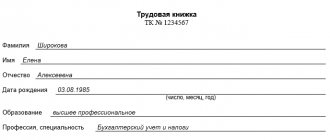Initial stage of merger
A merger is a form of reorganization in which several companies cease to exist as separate legal entities and merge into one, larger organization.
The sequence of steps that must be taken in the first stage of a merger is the same as in other forms of reorganization. We have listed all the necessary steps in the table.
Actions to be taken at the initial stage of the merger
| No. | Action | Who commits | Deadlines |
| 1 | Decide on merger | Owners | By decision of the owners |
| 2 | Send the decision on the merger to the “registering” Federal Tax Service and attach a written message about the reorganization | The company that last decided to merge | Within three business days after the date of the merger decision. Next, the Federal Tax Service will make an entry in the state register about the start of the reorganization |
| 3 | Inform the Pension Fund and the Social Insurance Fund in writing about the upcoming reorganization | Each company involved in the merger | Within three working days after the date of the merger decision |
| 4 | Notify all known creditors | Each company involved in the merger | Within five working days from the date of filing the application with the Federal Tax Service |
| 5 | Publish a notice of reorganization in special publications on behalf of all participants | The company that last decided to merge | Twice at intervals of once a month |
| 6 | Prepare the constituent documents of the organization created by merger | Persons responsible for the reorganization | No deadlines set |
| 7 | Conduct an inventory of property and liabilities | Each company involved in the merger | Immediately before drawing up the transfer deed |
What is a merger of organizations?
Reorganization of legal entities can be carried out through five forms:
- mergers;
- accessions;
- divisions;
- discharge;
- transformations.
The procedure for merging companies involves several legal entities ceasing their business activities as separate companies and merging into a single, larger legal entity. In this case, the rights of organizations that participate in the reorganization are transferred to the created legal entity. The responsibilities of each of the parties to the merger also transfer.
This form solves important corporate problems and optimizes business management. The newly created company receives property from all LLCs of the association. In addition, existing debts are transferred along with the property. The transfer is carried out according to the transfer deed.
Transfer deed
The next step is preparing the transfer deed. Each company participating in the merger must draw up this document. The date of the transfer deed can be any. But it is better that it coincides with the end of the quarter or year - as stated in paragraph 6 of the Instructions for the formation of accounting records during reorganization *.
The transfer deed must contain provisions on legal succession (Article 59 of the Civil Code of the Russian Federation). This is information about the amounts of receivables and payables, as well as about the property transferred to the newly created company. The value of the property under the transfer deed can be market, residual, initial, or corresponding to the actual cost of inventories (clause 7 of the Instructions for the formation of accounting records during reorganization).
There are no restrictions on the form of the transfer deed. Most often, it is drawn up in the form of an ordinary balance sheet and transcripts are attached for each of the lines. Inventory sheets can be used as transcripts. There is another option: abandon the balance sheet form, and simply list all types of assets and liabilities (fixed assets, intangible assets, “debtor”, “creditor”, etc.) and indicate their value. And in separate appendices, provide lists of objects, debtors, etc. (example examples of the transfer deed can be downloaded here or here).
How to formalize the merger of two companies?
When reorganizing companies and creating a new legal entity through merger, it is necessary to follow a standard procedure. Negotiations are held between the participants in the process about the upcoming merger, and an agreement is concluded between them. An extraordinary general meeting of the Company's participants is convened at each of the enterprises. A decision on reorganization is made and entered into the minutes.
After this, the registration authority is notified in form No. P12003. Also attached to this application are the minutes that were adopted at the general meeting of the founders of the LLC.
It is imperative to notify creditors about the procedure and publish a notice of reorganization in the journal “Bulletin of State Registration” (2 times). After this, submit to the tax office an application in form No. 12001, a deed of transfer, a merger agreement, constituent documents (2 copies), a receipt for payment of the state duty and evidence that all creditors were notified of the process.
To get a consultation
By clicking the “Submit” button, you automatically agree to the processing of your personal data by Yurstart LLC and accept the terms of the User Agreement
Period until completion of merger
Then you need to prepare documents for the reorganization. This is a deed of transfer, an application for registration of a company created by merger, a decision on reorganization, a document on payment of state duty, etc. The full list is given in paragraph 1 of Article 14 of Federal Law No. 129-FZ dated 08.08.01.
The package of documents should be brought to the “registering” Federal Tax Service and wait until the inspectors make an entry in the Unified State Register of Legal Entities. With the advent of this entry, the predecessor companies will cease to exist, and a new successor organization will appear in their place. But until the waiting period is completed, the predecessors continue to work: they calculate wages, depreciation, register the “primary”, etc.
How does an LLC reorganize in the form of a merger?
The process of reorganization of legal entities is as follows:
- The decision on reorganization by merger is made at a general meeting of LLC participants, the initiator of which can be any representative of the association (if there is at least one tenth of the number of votes of LLC participants).
- The registration authority must be notified of the decision made within three days after its approval. Since at least two companies are involved in the merger, a protocol on the decision made (in any form) is sent from each legal entity. Along with it, a notice of the start of the reorganization procedure is submitted in form No. P12003.
- Creditors must be notified in writing.
- An announcement about the reorganization process is published once every two months in the journal “Bulletin of State Registration”.
- The parties to the process must prepare documents such as an application for state registration of a legal entity in form No. P12001, constituent documents (in two copies), a merger agreement, a transfer deed and a receipt indicating payment of state duty, copies of letters to creditors and media publications, which are evidence notifications about the procedure. Please note that if documents are transmitted electronically, then there is no need to pay a state fee.
- The documentation is submitted to the Federal Tax Service by the applicant personally, through an authorized representative (a power of attorney is required), by mail or by submitting electronic documents.
- The process of creating a new legal entity is completed within six days after filing papers with the tax office. At the end of this period, the Charter is issued with the mark of the registering authority and the Unified State Register of Legal Entities entry sheet.
Final financial statements of predecessor companies
Each company participating in the merger must prepare final financial statements as of the date preceding the date of entry into the Unified State Register of Legal Entities about the reorganization. The statements consist of a balance sheet, profit and loss account, statements of changes in equity and cash flows, an explanation and an auditor's report (if the company is subject to statutory audit).
The final accounting statements must reflect transactions performed during the period from the signing of the transfer deed to the closure of the predecessor organization. Because of these transactions, the indicators in the final balance sheet will not coincide with the indicators in the transfer act.
In addition, each predecessor company must close account 99 “Profit and Loss”. Profits can be distributed according to the decision of the founders.
After the final reporting, predecessors do not have to submit balance sheets and other documents, since the last reporting period for them is the time from the beginning of the year to the date of merger.
What is the time frame for the reorganization?
The time it takes to process changes depends on a variety of factors. The duration of the reorganization may be affected by the need to notify the antimonopoly authority.
It is necessary to notify the authority and obtain its consent in cases where the total value of the shares of the enterprises participating in the merger exceeds 3 billion rubles, or exceeds the maximum limit established by the Government.
The tax authority has the right to conduct an on-site audit during the process of reorganization of companies, then the processing time will depend on the timing of the audit and the results obtained.
If the merger goes through as usual, it usually takes 2 to 3 months. If the procedure is complicated by the listed factors, the time frame may increase to six months.
Inaugural reporting of a newly created organization
An organization created as a result of a merger must draw up introductory financial statements as of the date on which an entry about the reorganization is made in the Unified State Register of Legal Entities. The lines of the opening balance will contain the sum of the corresponding indicators of the closing balances of predecessors. The exception is mutual settlements between predecessors - for example, when one of them was a borrower and the other a lender. Such indicators are not summed up, since if the debtor and creditor coincide, the obligation terminates. Also, in the introductory statements of the assignee, there is no need to summarize the data from the profit and loss statements of the reorganized companies.
Particular attention should be paid to the authorized capital of the successor organization. If it is less than the amount of capital of predecessors, then the difference is reflected in the balance sheet in the line “Retained earnings (uncovered loss).” If the legal successor’s capital is greater than the amount of capital before the reorganization, such a difference does not need to be shown in the balance sheet. In both cases, the accountant does not make any entries.
The introductory report must be submitted to the Federal Tax Service either immediately after registration or at the end of the current quarter - depending on what is more convenient for your inspector.
Conversion by merging, step by step instructions
Since at least two business entities take part in the merger of organizations by accession, the algorithm of actions will be slightly different from all other forms:
Stage 1. At this stage, all participants in the reorganization hold general meetings of owners and, by voting, make a decision on the reorganization. The results are documented in a protocol (if there are several owners) or in the form of a decision on reorganization (if there is only one owner). Also, each company must conduct an inventory of assets, draw up a transfer deed and take care of paying off its debts.
An example of a completed decision on the reorganization of an LLC in the form of a merger.
Stage 2. Holding a joint meeting of the reorganization participants, which is attended by representatives of each company. At this stage, it is necessary to sign the final decision on the reorganization (in the form of a merger agreement), develop and approve the draft charter of the created enterprise, and also, based on the data submitted by the companies, formulate a general transfer act.
An example of a joint protocol for a company being created as a result of a merger. Stage 3. Notifying the registration authority of the decision to pursue a merger. Participants in the procedure are given three days from the moment of signing the merger agreement (agreement) to do this.
Sample agreement on the merger of companies participating in the reorganization.
Stage 4. Notification of all known creditors. These actions must be taken by all participants in the reorganization when merging a company with debts. Notification occurs in two ways:
- by sending relevant notices by mail;
- by publishing a message in the media (in the Bulletin, at least twice).
It is also necessary to take care of repaying all debts to the tax office and extra-budgetary funds, in particular to the Pension Fund. All known debts and claims must be settled before the merger is completed.
An example of a notification to creditors about the reorganization of an LLC in the form of a merger.
Stage 5. Submitting a package of necessary documents to the registration authority to begin the reorganization procedure.
Stage 6. Registration of a new enterprise in the Unified State Register of Legal Entities and receipt of documents confirming the merger procedure.
Reorganization in the form of a merger of enterprises is considered completed from the moment information about the newly created enterprise is entered into the state register.
The merger period usually ranges from 2-3 months to six months, depending on the size and specific types of reorganized enterprises.
"Primary" in the transition period
After the merger, the newly created contractual relations of the reorganized legal entities. But the agreements themselves are still concluded on behalf of their predecessors. The question arises: is it necessary to sign additional agreements to replace the parties to the transaction? Or can you simply send information letters to counterparties that indicate the name and details of the successor company?
We believe that additional agreements are not necessary, because all the rights and obligations of each of the predecessor companies are transferred to the newly created organization under the transfer deed (clause 1 of Article 58 of the Civil Code of the Russian Federation). This also applies to contractual relations. This means that to continue cooperation with suppliers and clients, an extract from the Unified State Register of Legal Entities and a transfer deed are sufficient.
As for invoices, certificates of work performed and invoices, before the date of merger they are issued on behalf of predecessors, on the date of merger and further - on behalf of the successor.
LLC merger procedure: step-by-step instructions
- An extraordinary general meeting of the founders of the LLC is convened, at which a unanimous decision is made to carry out the reorganization.
- The decision on reorganization and notification of the start of the procedure in form P12003 must be sent to the registration authority.
- Creditors need to be informed about upcoming changes.
- The journal “Bulletin of State Registration” publishes information about the merger of the Companies twice (once a month).
- After publication, work begins on collecting documents; the list depends on the form of reorganization.
- The collected documentation is sent to the tax office. You can take it in person to the department, send it remotely by mail or through the nalog.ru website service “Submitting government documents.”
- After 6 days from the date of submission of papers, you can receive a sheet of registration of the Unified State Register of Legal Entities and the Charter of the created legal entity.
Who submits declarations for reorganized companies
If possible, predecessor organizations must report all taxes before the merger, that is, before making an entry in the unified state register. But in practice, as a rule, they do not have time to do this. Then, the very next day after the reorganization, inspectors at the place of registration of the predecessor refuse to accept declarations. In this case, all tax reporting will have to be submitted to the newly created organization to its inspectorate. If, after the reorganization, mistakes of the predecessor are discovered, the successor submits a “clarification” for him.
Please note: the deadline for submitting declarations will not be shifted due to the reorganization. For example, for income tax for the year, the successor is required to report no later than March 28 of the following year - both for himself and for each predecessor.
Submitting documents to the Federal Tax Service Inspectorate
When registering a limited liability company created in the process of reorganization of an enterprise in the form of a merger, the Inspectorate of the Federal Tax Service, on the basis of decisions on state registration of the company created through reorganization in the form of a merger, and state registration of termination of the activities of reorganized limited liability companies:
- makes an entry in the Unified State Register (USRLE) about the creation of a new organization and the termination of the activities of previous companies;
- reports the termination of the activities of reorganized limited liability companies to the tax authorities at their location;
- sends copies of the decision on state registration of termination of the activities of reorganized limited liability companies, an application for registration of a new organization and an extract from the Unified State Register of Legal Entities;
- issues to the applicant documents indicating that an entry has been made in the Unified State Register of Organizations;
- reports registration by reorganization of a legal entity to the tax authority at the location of the newly created limited liability company and sends the registration file of the enterprise there.
If during a merger the debtor merged with the creditor
It happens that one participant in the merger is a debtor, and the other participant is a creditor. Then, after the reorganization, the creditor and debtor become one, and the debt is automatically repaid. This means that because of the merger, the debtor will not have to repay the debt, and the creditor will not be able to get his money back.
Is the debtor obliged to show income on the date of reorganization, and the creditor expenses? The Tax Code does not regulate this issue. But officials believe that taxable income does not arise for the debtor. This point of view was expressed by the Russian Ministry of Finance in letters dated July 30, 2010 No. 03-03-06/1/502 and dated November 29, 2010 No. 03-03-06/1/744. True, they talk about reorganization in the form of annexation. But, in our opinion, the conclusions are also applicable in the case of a merger.
In addition, similar conclusions can be drawn regarding the lender's costs. In other words, as of the merger date, the creditor may not include the extinguished debt as an expense.
A special case is the situation when a merger involves a supplier and a buyer who, before the reorganization, transferred an advance to the supplier. In such circumstances, the seller has the right, before reorganization, to deduct the VAT previously accrued on the prepayment. The buyer, on the contrary, is obliged to restore the tax previously accepted for deduction when transferring the advance payment. The same position is given in the letter of the Ministry of Finance of Russia dated September 25, 2009 No. 03-07-11/242. Although the letter refers to affiliation, it can also be used as a guide in the event of a merger.
Succession during reorganization of a legal entity
Succession during the reorganization of a legal entity is carried out in the manner regulated by Art. 58 of the Code. According to the norms of this article, succession depends on the form in which the reorganization is carried out:
- Merger - the existing rights and obligations of the “merging” companies are transferred to the newly formed organization.
- Affiliation - an enterprise to which another (others) are attached acquires the rights and obligations of the one that joins.
- Succession during division is accomplished by virtue of the provisions of the transfer deed, under the terms of which the rights and existing obligations are transferred to the newly established organizations.
- Separation implies the transfer of rights from the reorganized legal entity to those that were separated, to the extent provided for by the transfer deed.
- The obligations of the reorganized company, if such a form of reorganization as transformation is carried out, remains the same with respect to other persons, except for the rights and obligations relating to the founders (participants), the change of which was due to this form of reorganization.
Tax base for VAT
The newly created company can deduct value added tax that one of its predecessors paid to sellers or at customs, but did not have time to deduct before the merger.
The successor must confirm the right to deduction with an invoice and primary documents for the transaction. It is also necessary that the goods (results of work, services) purchased by the predecessor be registered for use in transactions subject to VAT. There is one more mandatory condition: the predecessor must transfer documents confirming payment (clause 5 of Article 162.1 of the Tax Code of the Russian Federation).
An organization formed as a result of a merger can deduct VAT, which predecessors accrued when receiving an advance. The assignee can do this after the sale of the prepaid goods, or after termination of the transaction and return of the advance payment. There is one limitation here - the deduction must be accepted no later than one year from the date of return (clause 4 of Article 162.1 of the Tax Code of the Russian Federation).
In practice, many problems arise due to the date of invoices issued in the name of predecessors. If the documents are dated after the reorganization, then the inspectors do not allow the deduction to be accepted. In such a situation, the accountant can only contact the suppliers and ask for corrections.
Documentation of reorganization
The accountant will be able to reflect in the reporting information about the reorganization of the company after he receives all the necessary documents [1].
Their list is given in paragraph 4 of the Guidelines. These are: - constituent documents of newly formed organizations, as well as their certificates of state registration;
— decision on reorganization (merger or accession agreement);








